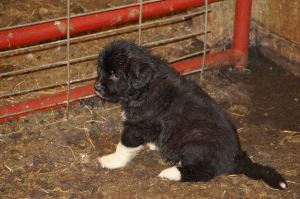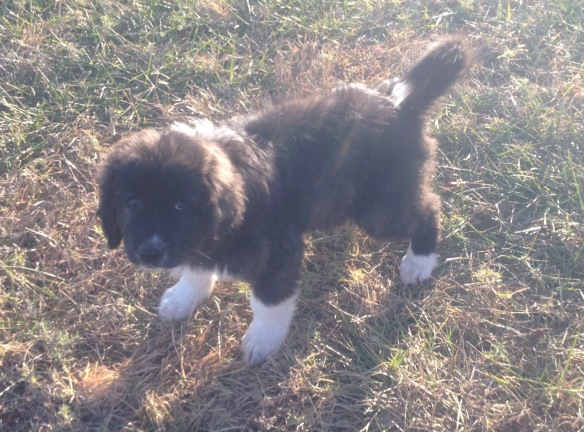Despite spending a vast amount on fencing to keep our sheep and goats IN, we haven’t been successful in keeping predators OUT. We considered the loss of a lamb within the first few weeks to be a fluke caused by a gap in the fence left by fencing contractors. Having closed the gap we had no further cause for concern for two years, so had grown complacent, until this spring when coyotes dug under the fence, resulting in the loss of twin lambs.
The attack was disconcerting because although we easily found the spot they’d dug under and reinforced it, what’s to prevent them digging at another spot? And with the investment in the Royal White sheep, keeping them safe became even more important.
For years people have been telling us we should consider donkeys, llamas or dogs as Livestock Guardians. Donkeys’ braying and reports of their trying to mate the sheep made them unappealing. Llamas’ need to be sheared and reports of their trying to mate the sheep also made them unappealing. And dogs? We resisted them for several reasons:
- They are another animal that requires care and feeding.
- Many breeds of LGD bark. A lot.
- They are another animal that requires care and feeding.
- Many LGD’s roam.
- They are another animal that requires care and feeding.
However due to the emotional devastation that follows the loss of an animal to predators, and the financial investment in the Royal White Sheep, we reconsidered. But we decided there had to be alternatives to Great Pyrenees – the big, fluffy white dogs most commonly used as guardians in this area, so we set about finding them.
What we learned was surprising: there are many different breeds of Livestock Guardian Dog (LGD), each coming from a different area of Europe or Asia, and each therefore having been bred with different qualities. Exotic sounding names like Sarplaninac, Ovcharka, Karakachan, Akbash, Tornjak, Tibetan Mastiff and Central Asian Shepherd. Dogs from Bosnia, Croatia, Bulgaria, Turkey and Tibet.
After learning of the strengths and weaknesses of each breed, we felt that the Karakachan would be the best match for us. Unlike Great Pyrenees, who bark to alert potential predators of their presence, Karakachan tend to bark only when they detect an actual threat. And, rather than roam to expand their territory, they tend to bond more closely to their stock and therefore stay closer to them. When a threat is detected, they will gather the stock behind them, while facing off the threat.
Ideally, LGDs work better in pairs. A pair will trade off the work load, with one sleeping while the other keeps watch. When there is a threat, one will stay with the stock while the other confronts the predator. However in cases where it is only possible to have one dog, Karakachans work better as a sole guardian than do some of the other breeds.
Enter Kilo, the Karakachan Livestock Guardian Dog (LGD). Deciding on a Karakachan was the easy part; finding one was the challenge. However thanks to the Internet, we were able to locate a litter in West Virginia, and committed to a pup – then 3 days old. Here he is at five weeks old:
At six weeks he weighed over 12 pounds. At eight weeks his litter mates started leaving for their new farms. And finally, at nine weeks, Kilo farewelled his mother to start on his long journey westward. The first leg involved a 13-hour drive to Arkansas – along with one brother. The second leg started when I arrived in Arkansas to collect him and drive him the remaining 7 hours home.
The next few months will be a steep learning curve for Kilo and for us. Kilo will need to gain the trust of the sheep and goats – currently far larger than he is. He will live with them and bond to them. Meanwhile we will be learning how to incorporate a guardian into our daily routines. I’m sure there will be challenges along the way but feel that sleep will come easier – especially when we have young kids and lambs – than it does now with the constant worry about their welfare.



He’s adorable! I do love puppies. I’ll be searching for a guardian that can also be a pet and think you gave me a great start. I’d never heard of this breed. We need a big dog that can keep bobcats and coyotes out of its territory. I’ll be following along as Kilo grows and works.
Hope he proves as useful as he is adorable
Pingback: Karina | Self-Sufficiency and Assorted Hijinks
Pingback: The Transformation of a Pole Barn – Part 2 | Self-Sufficiency and Assorted Hijinks